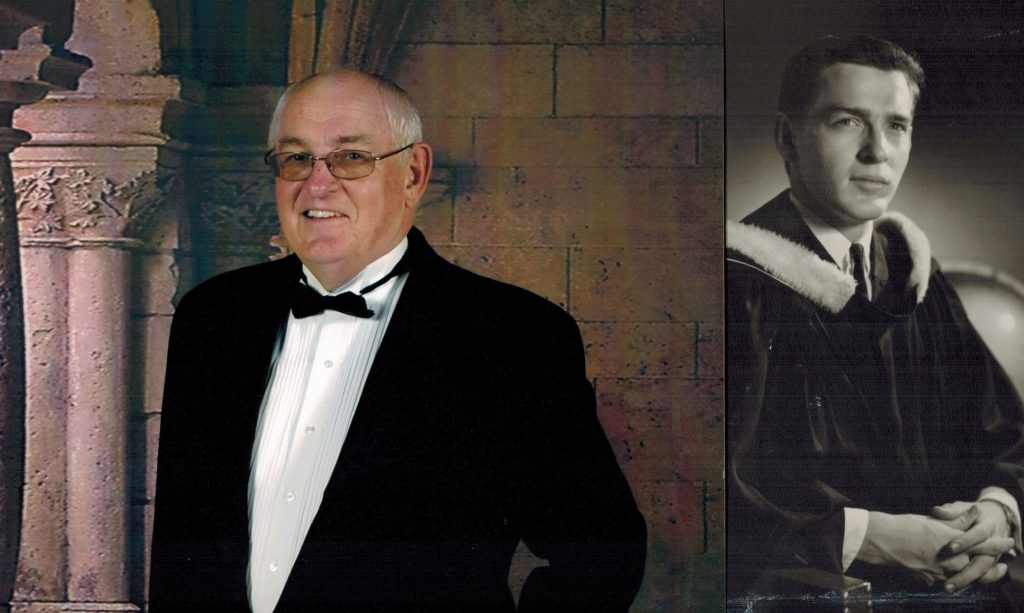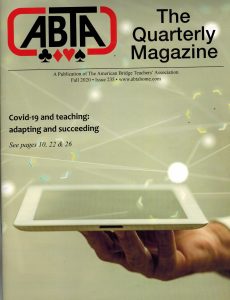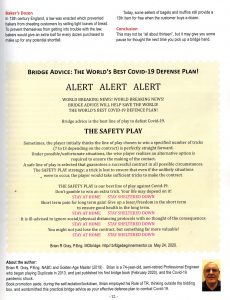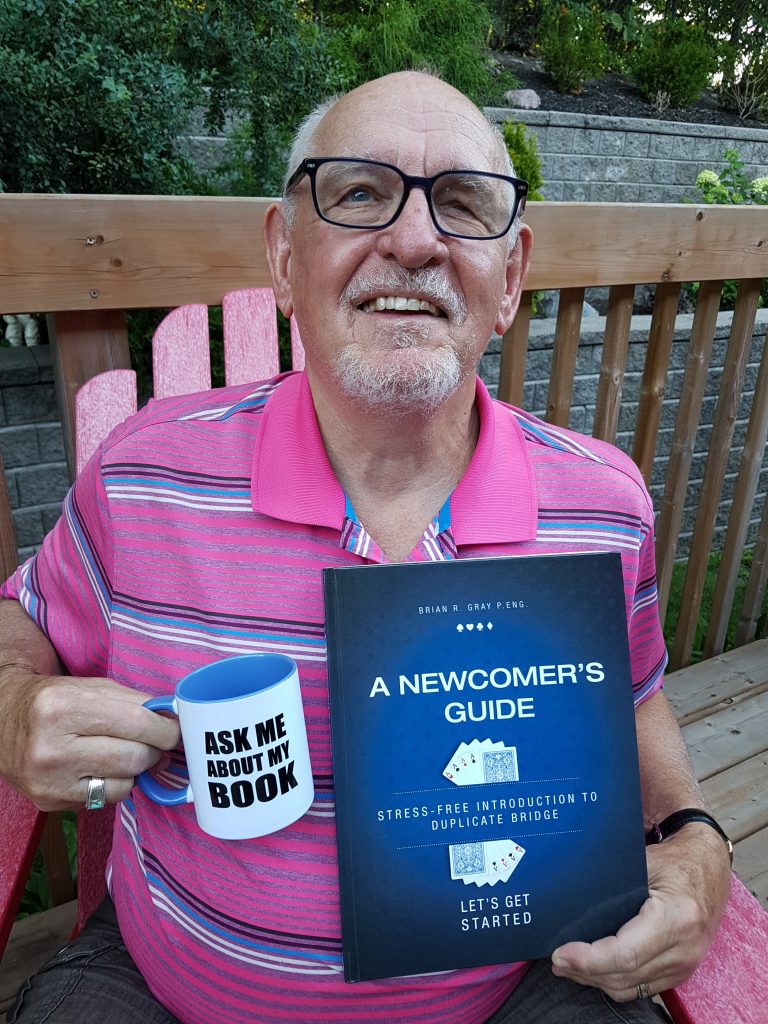
When engineers talk about bridge plans, it usually conjures up visions of infrastructure; Brian Gray (CivE 6T8, MEng 7T1), however, has game plans in mind.

As an advancing beginner to the duplicate bridge-playing community, Gray has authored columns and a book, with a recently penned a column published in the fall 2020 edition of the bridge publication American Bridge Teachers’ Association The Quarterly Magazine. Appropriately, it’s a pandemic-themed article titled “The Safety Play“advising readers to stay home.
Linking the ethics of practicing engineering to card playing, Gray stresses “The ethics in engineering is just like the ethics in bridge. With bridge you have a convention card of all the agreements you have with your partner on how you’re going to bid. But you cannot have anything secret.” There must be full disclosure.
“Ethics and engineering. Sometimes you have to tell a client like a good friend what he needs to hear. We at Peto McCallum do a lot of work for conditional offer to purchase properties. We do soil tests, and the client may love the property, they’ve done the market study; this is the site for our building. But sometimes you have to tell them there’s a high water table. You want three levels of underground parking, there will be costly dewatering and permanent waterproof membrane design requirements.”
“Peto also does investigations. Occasionally, after property registry search, field soil sampling and chemical testing, we have to be the bearers of bad news,” Gray continues. “The site was an old BP (British Petroleum) gas station in the 50s. That’s why it’s available. So, when you’re doing that type of work, where the results of the report will determine the feasibility of the project. You really do need to call a spade a spade and not a ‘good news’ report.”

Gray was introduced to the card game of bridge as a youth, when his parents would host social parties. “Saturday night there were suddenly tables put out and bowls of treats, I like nuts,” he recalls. He also admits to missing a class or two playing bridge at the Galbraith third floor common room.
Dabbling with the game over the years, he found the game of duplicate bridge as a calling and started playing in 2012.
Gray saw beginners struggling and that there was a missing link for newcomers to leave the comfort of the classroom to transition confidently and successfully to the clubroom environment.

The result is A Newcomer’s Guide: Stress-Free Introduction to Duplicate Bridge, published February 18, 2020.
John Rayner, Canadian Pairs Champion and member of the Canadian Bridge Hall of Fame wrote “Brian’s book should be a ‘must-read’ for every newer player and for more experienced players as well– you have done bridge players a great service with your guide.”
Duplicate bridge is widely used in club and tournament play. The game is called duplicate, as competing pairs play the same cards with the same Dealer and Vulnerability, with scoring based on relative performance. Essentially, every hand is played in competition with others playing identical cards. “The cards are in a plastic board, and it sits on the table. You play the cards with the four people at the table. When you’re finished you put them in the board, and it gets passed on to another table,” explains Gray. “The interesting part about duplicate bridge is it’s the scoring system, but it’s basically the same game everyone plays.”
The publicity tour for the book never had a chance to get underway. Visits to several clubs and tournaments had been mapped out, but the pandemic intervened and no in-person gatherings were to be held. Gray, then wintering in Scottsdale, AZ and close to many bridge clubs, was able to return to Canada and his home in Mississauga, Ont.
Though initially easing into semi-retirement in 2011, Gray has stayed working in engineering as a Principal Consultant at Peto MacCallum. “Where would you find somebody with 42 years experience in geotechnical engineering? I have a love of doing foundation investigations for bridges and now my new love has been duplicate bridge,” Gray reflects on his dual loves.
After completing his MEng at U of T Gray worked with Golder Associates, a geotechnical firm, for five-and-a-half years, then with Peto MacCallum for 45 years. “I was the president of Peto MacCallum from 2000 to 2003 and on the board from 1987 to 2010,”
“Of note, 2020 was a great year for me – 50 years as an engineer. I published my first bridge book and 45 years at Peto in June, ” recalls Gray.
Gray’s ability to keep accurate track of his work has transcended into his play. “I’m an engineer, I keep records. When you’re doing work, you monitor – things like settlement of buildings, you do assessment of performance of structures by taking data. I keep track of the number of games – I played 885 games to date and know who was my partner – I’ve had over 100 partners.”
As a parting reminder he quips, “Engineering and Bridge are linked acknowledging the importance of Ethics, Mentoring and Continued Learning. Bridge keeps the grey cells working; it’s a mental mind game sport!”
By Phill Snel